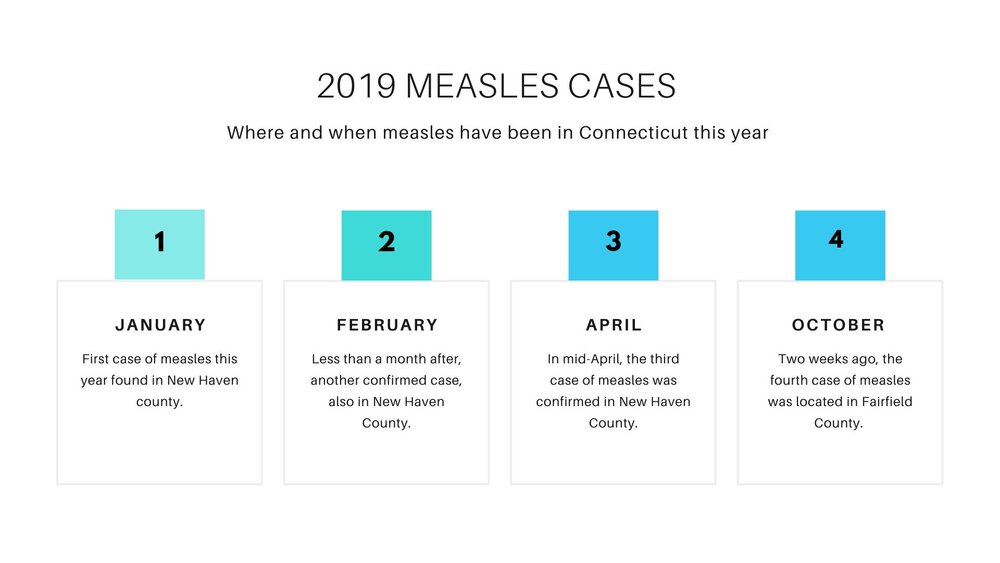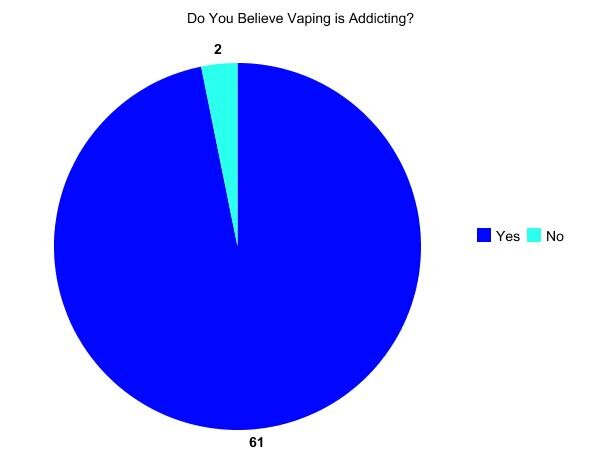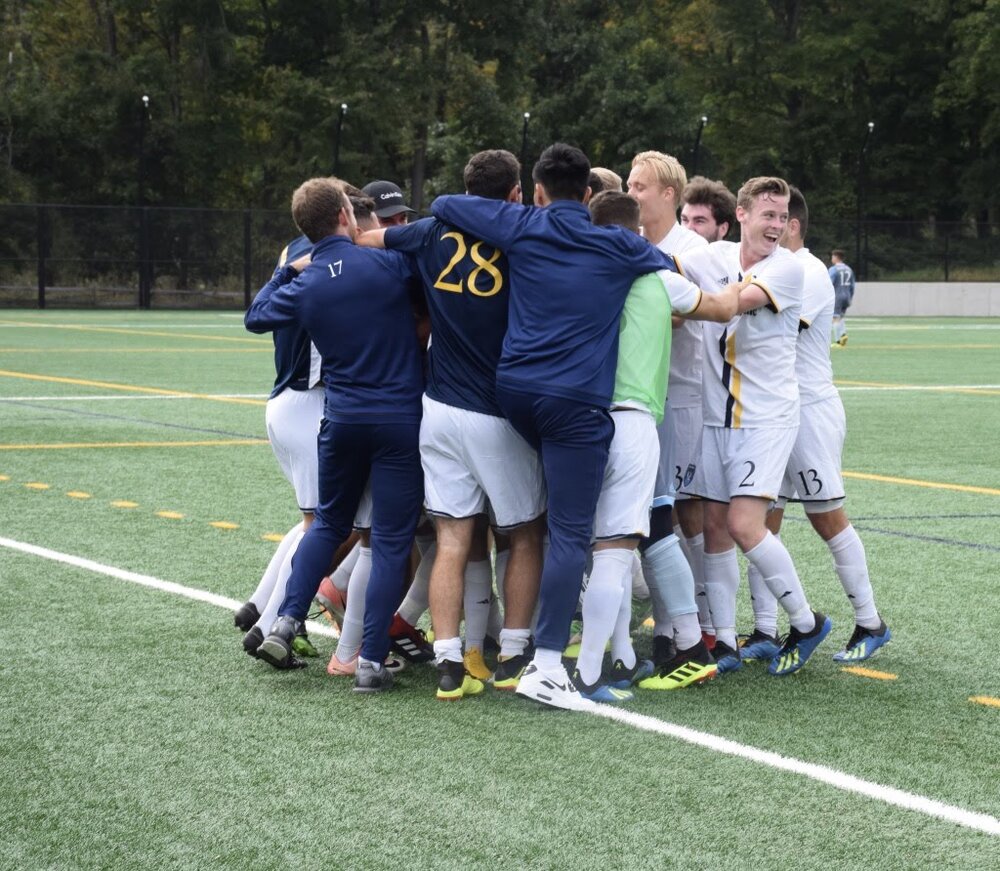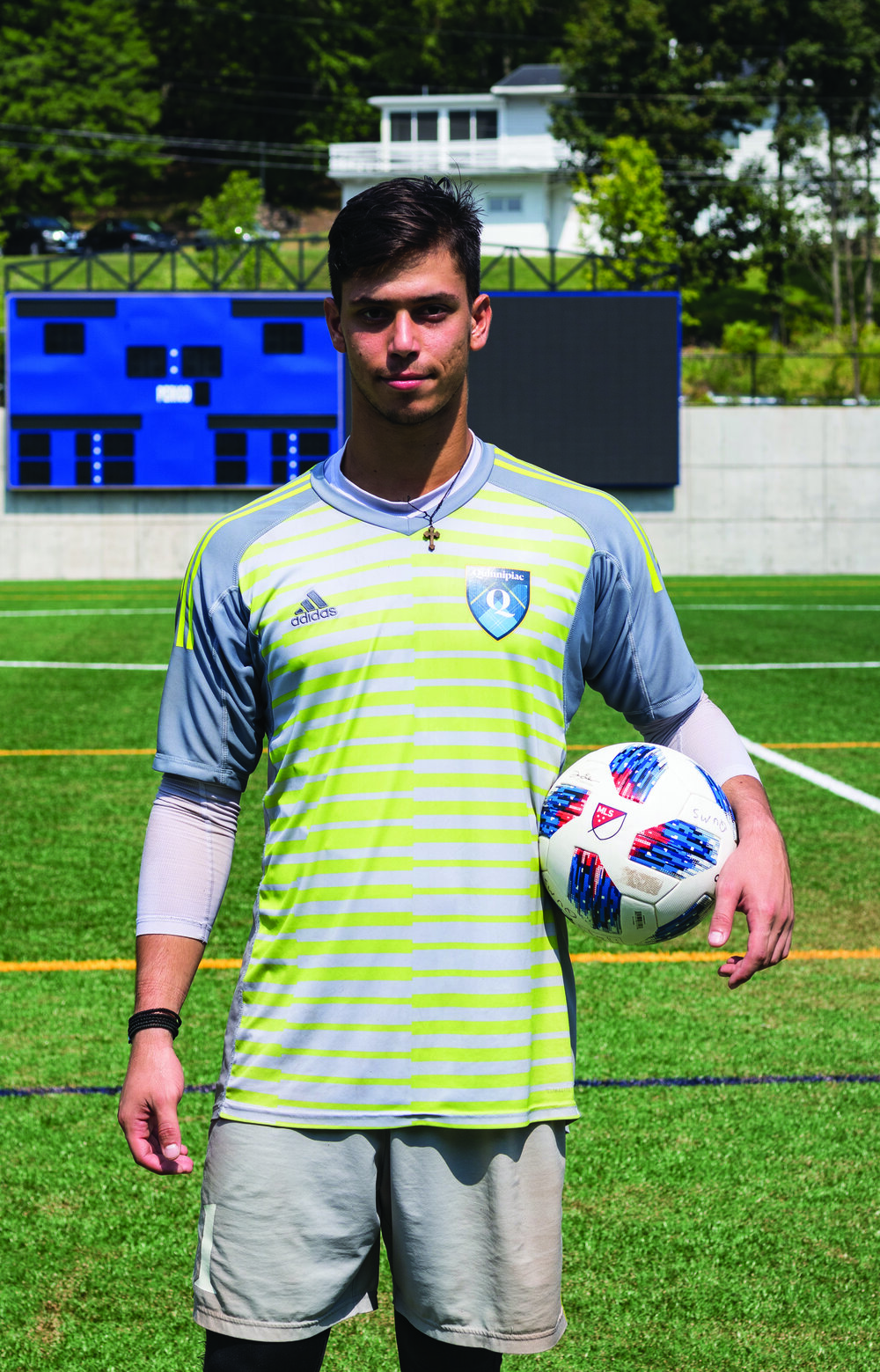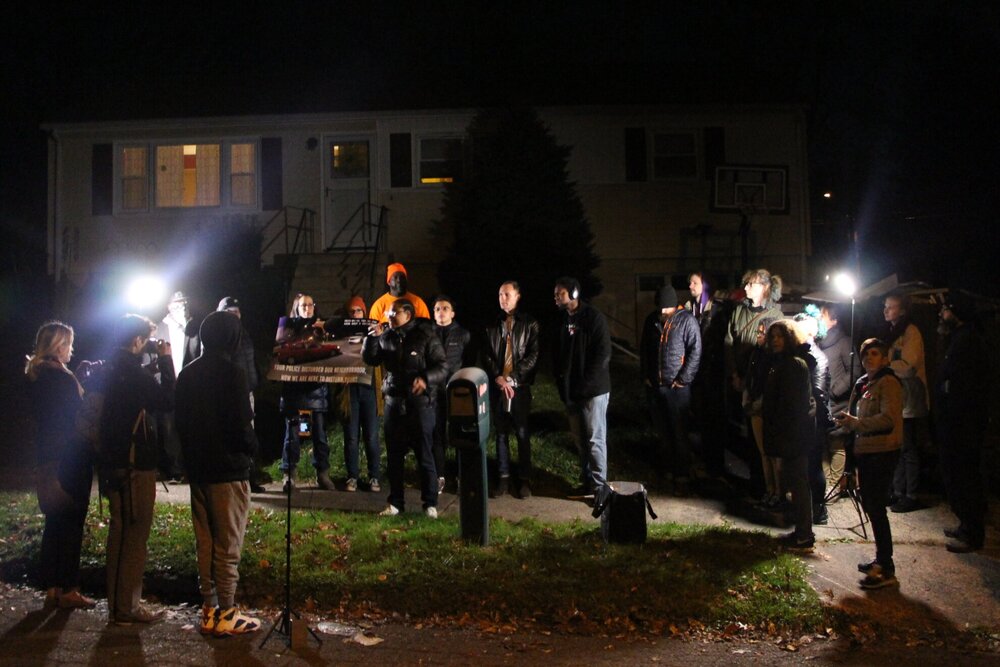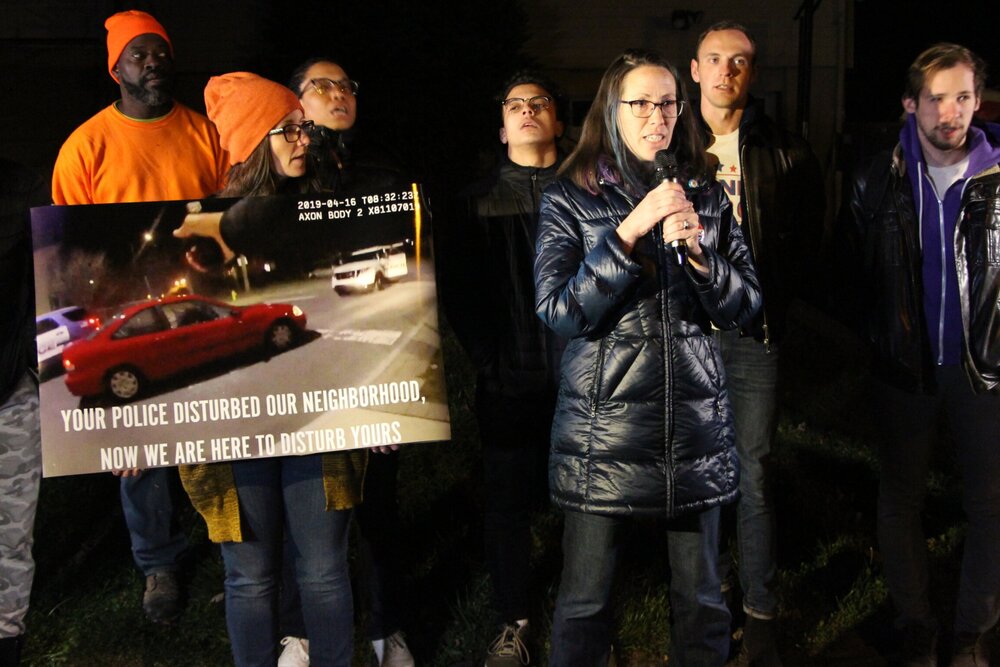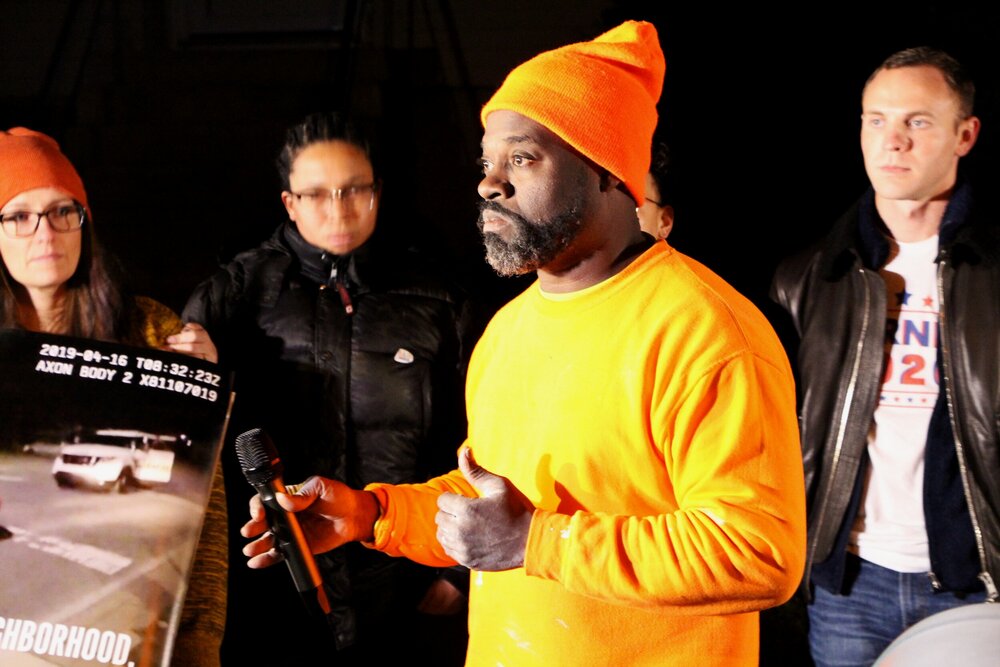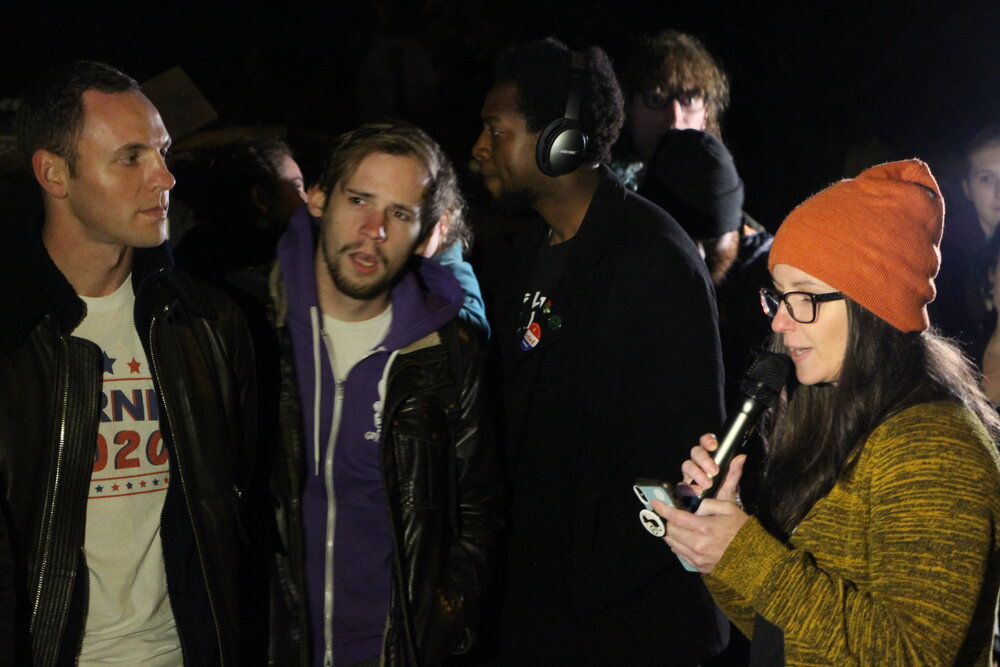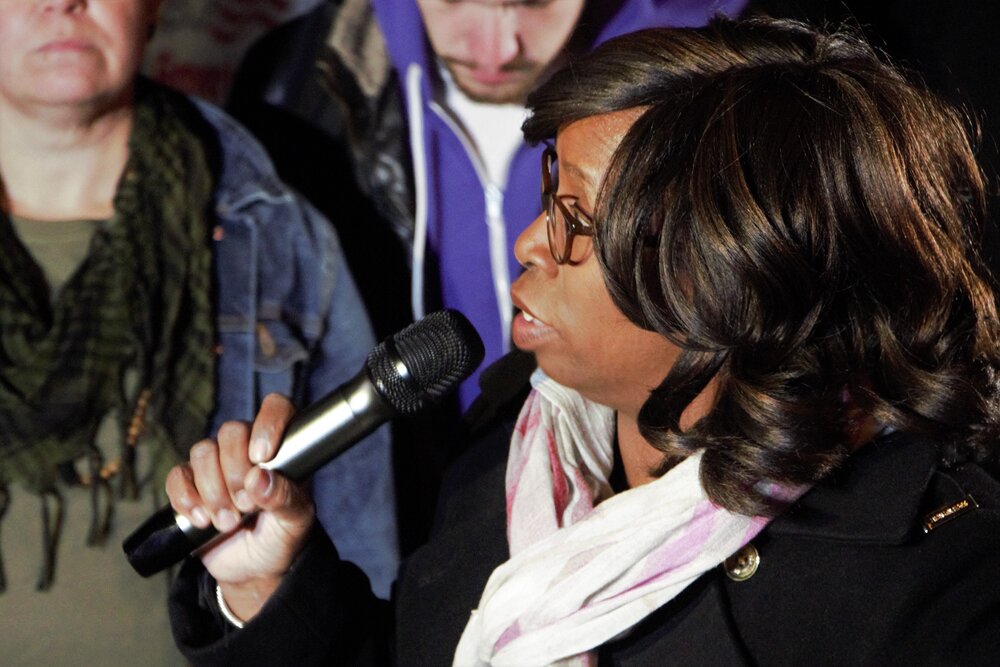By Dante Turo
Quinnipiac senior Dylan Lewis started to vape during his senior year of high school because he wanted to join in on what his friends were doing. Without knowing the consequences, he continued to vape because he enjoyed the act of smoking itself.
After sharing vaping devices with his friends for some time, Lewis would eventually go on to buy his own vape. He purchased a Juul, which is one of the most popular e-cigarettes on the market. It’s known for its various flavors and high nicotine percentages.
Lewis became addicted to the nicotine.
“When I first started, I did it just because I weirdly liked the act of smoking in general and would join in with my friends when they were smoking,” Lewis said. “The past year or so, however, is essentially just because I’ve become addicted to nicotine.”
Nicotine is a highly addictive chemical that can increase a person’s heart rate and blood pressure. It can also increase the flow of blood to the heart and can lead to the hardening of the arterial walls. In some e-cigarettes, you can buy pods that have a higher nicotine percentage than most e-cigarettes.
Lewis didn’t know of the long-term effects of smoking e-cigarettes when he started to vape, but now there are reports of people suffering from mysterious lung illnesses that have been linked to vaping.
There have been over 1,400 lung illnesses that have been reported from 49 states and one U.S. territory. So far, there have been 33 confirmed deaths from this illness.
The most concerning part about these reports are how it’s affecting the younger generation, including college students. There are students at Quinnipiac who admit to vaping even with all the news coming out about these illnesses and deaths. Over 65 students were surveyed, and thirty say that they still continue to vape.
Some college students started to vape because of its easy accessibility and seeing others doing it in a social setting. Emily Taft, a health science major at Quinnipiac, has admitted to vaping in the past before she knew the long-term effects it can have on your health.
“I started doing so in the first place due to vaping becoming very popular in a social setting, so I believe that the social influence surrounding vaping is why I had decided to try it,” she said. “I do think that vaping is addicting. The behavior or constantly holding a vape in your hand, or having it in your mouth, makes the behavior easy access and creates addictive tendencies.”
Out of the 66 students that were asked if they believe vaping is addicting, a staggering 61 students said that vaping is addicting.
A new survey for Health Capsule showed an alarming increase in adolescents who have tried vaping in 2018. More than 44,000 students took part in the survey, which found that about 37 percent of 12th graders reported vaping in 2018, which is a 9 percent increase from 2017. They saw an increase in substances that were being vaped, which included nicotine, marijuana, and flavored liquids.
Monitoring the Future held a nationwide survey on drug use for college students. The results found that 11 percent of college students had vaped marijuana within a month of taking the survey. They also found that more than 15 percent of college students vaped nicotine within a month of taking the survey.
With all the deaths and illnesses that have been reported thus far, why do people, and students in general, continue to vape? The numbers keep rising, with a new death being reported not too long after the one before.
Christy Chase, director of Student Health Services at Quinnipiac, says the epidemic is awful, and students need to be more aware of what they’re putting in their lungs.
“I think young people have been misled and thought that it was a safe thing,” Chase said. “I think we’re starting to see that that was not true, and I think there’s a lot more that’s going to be uncovered.”
As a nurse practitioner, Chase would ask students if they smoked or were active smokers. They would say no, but when asking if they vape, she gets a different response because students don’t link the two together. She’s worried about the long-term effects this will have on students.
“Those (15 deaths) are even immediate,” she said. “I’m thinking long-term.”
Kevin Parker, prevention and wellness educator at Quinnipiac, agrees this is a problem in the long run.
“I think the sneaky specter of all of this is the long thing down the road when students who are 18 now are 35, what’re we going to see?” Parker said. “We don’t know, and I don’t think anybody knows.”
The chemicals in these vapes, more specifically the Juul, is what’s most concerning to Chase.
“Who knows what these chemicals are going to do. Are they just going to change the surface in the lung? Are they going to change the exchange of gasses?” she said. “Nicotine is so bad for your body. That alone, it narrows the cardiovascular pathways, so it affects the heart, the lung, and the brain.”
Besides nicotine, e-cigarettes contain harmful ingredients that can be harmful to a person’s lungs. These ingredients include ultrafine particles, diacetyl, volatile organic compounds and heavy metals. The New York State Department of Health found high levels of vitamin E acetate in almost all of the vaping products that contained cannabis. A pesticide that can transform into hydrogen cyanide when burned was linked to bootleg marijuana vapes, as well.
These ingredients and chemicals may play a role in why people are coming down with these vaping-related illnesses.
Reese Mentiply, a junior at Quinnipiac, still vapes from time to time, but not as often as he used to. He says he stopped vaping as often because of how it made him feel.
“Mostly I stopped because it made me feel awful,” he said.
Even though vaping made Mentiply feel “awful,” he believes that vaping is better than smoking cigarettes. He started vaping in the first place to cut back on smoking other products.
“I started vaping at first to cut down on smoking,” he said. “I vaped for nicotine.”
Parker added how bad nicotine is for your body. People try to justify nicotine and what it does and play it off as something that isn’t as bad as it truly is.
“One of the interesting things I’ve seen people make a counter-argument for is ‘nicotine isn’t actually all that bad.’ Actually, there’s significant research as well on what nicotine alone does in your body,” he said. “I think people just don’t see that research pushed out all that often because the public don’t want to think of it.”
The state of Connecticut is taking note of the younger generation getting their hands on these products. The state raised the legal age to purchase tobacco products from 18 to 21, which became effective on October 1. The state is also enforcing restrictions on where people can smoke or vape. The use of a vaping device will be prohibited in any state or school buildings, food and liquor stores, restaurants, college dorms and race tracks.
Senator Richard Blumenthal is calling for the FDA to stop the sale of vapes that are disguised as smartwatches, sweatshirts, backpacks and phone cases.
Sean Patten, a senior at Quinnipiac, says he tends to vape, especially when there’s alcohol in his system, and finds the reports “scary.”
“I have no reason why. When I am drinking alcohol, my body seems to always want it. That is the only time,” Patten said. “The reports scare me, but I feel as if I am far too gone.”
Patten said he began vaping in the first place because of the various flavors these vapes have to offer. Because of how addictive it is, he has a hard time turning down the need to vape when he goes out.
“I started vaping because it tasted good and made me feel good. There are so many flavors, and the taste is all different,” he said. “I have cut down a lot from my previous years, but it is addicting. There are so many pressures. They are all around on a night out, so it’s hard not to.”
Both Chase and Parker believe flavorings and peer pressure plays a huge part in why adolescents began to vape.
Parker worked at a high school before working at colleges and said that social media and influence from older siblings played a role in why students started to get hooked on these devices.
“It was all around the social media piece. It was ‘well I saw people doing this that I know from home, or that I know who aren’t even in my school.’ So, it trickled in through that way,” he said.
“When they did research around that, 80 percent of students who were in high school or younger were getting it from an older source.”
Joseph Guido, a senior business major at Quinnipiac, admitted to vaping in the past because of peer pressure and wanting to be cool. He can count on both of his hands how many times he’s vaped in his life, so the reports don’t really scare him.
“Since I have hardly vaped in my life, these reports don’t scare me, but they make me worry about my friends,” Guido said. “I still have friends that vape heavily. I worry about them more than myself.”
The idea of vaping was to give people an alternative to smoking cigarettes. Out of 65 students questioned in an in-house survey, 40 believe vaping is better than smoking cigarettes.
Even if vaping may be deemed safer in their eyes, it can lead to bad habits, like smoking cigarettes in the future. At a recent conference, Parker learned that students who started smoking e-cigarettes were more likely to begin smoking combustible cigarettes later on.
“We would not be recommending e-cigarettes as a smoking sensation tool based on that research,” he said. “If it’s your primary thing, it’s something you start with; it’s definitely likely that you’re going to be going to combustible cigarettes.”
Quinnipiac has been finding ways to urge students to quit vaping.
The Health and Wellness department held an event where students could throw away their vaping devices in return for school gear. Parker said they collected around 40 different vaping devices.
“For us, that event’s intent was to hit the population who are ready to quit. We know that people hear the media and hear the messages around ‘Juul is bad,’ and some of them don’t believe it, and some of them do,” he said.
“That event’s intent was not to convince people one way or the other around what was going on of risks but was to be an option for people who were ready to quit.”
The department is looking to offer more events like this in the future, especially with more news and reports coming out as time goes on. Parker said he had around 10 students who told him that they vaped within the past hour and many more who said they’ve tried to quit before but couldn’t. He’s hoping future events will allow more students to hand in their devices and quit vaping.
Some students have tried to quit vaping but are having a hard time doing so.
More than 65 college students were asked multiple questions about their vaping habits. One question that was asked was if they had tried to quit vaping, if they even do vape. Thirty-five students say they have successfully or at least tried to stop, but some have not been able to fully quit. One student said he has tried to quit six to seven times but has been unsuccessful in doing so.
Smoking is one of the hardest addictions to kick, and college students are now starting to learn that.
Chase and Parker strongly urged students to stop vaping now. When asked if they could give a message to students who do vape, their message is simple: stop now.
“Don’t be tricked by the fancy devices,” Parker said. “Don’t get tricked, but if you’re addicted, get help for it.”
(Juul Photo by Vaping360 (https://vaping360.com/best-vape-starter-kits/pod-mini-vapes/)
